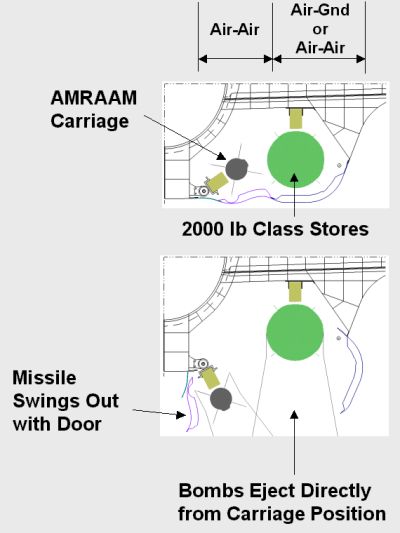
There are 3 types of air-to-air missile guidance techniques:
• Semi-Active Homing.
• Active Homing.
• Passive Homing.
Semi-Active Homing Guidance:
Missile relies on an external pointed energy source to ‘illuminate’ the target. The energy reflected by this target is intercepted by a receiver on the missile.
The weapon uses radio energy collected by its radar receiver to determine target trajectory and adjust control surfaces/nozzles to intercept.
The American AIM-7 Sparrow and British Sky flash use this is homing technique.
Active Homing Guidance:

Active homing works like semi-active homing, except that tracking energy is both transmitted-received by the missile itself. No external source is needed. It is this reason that active homing missiles are called “fire-and-forget”.
At longer ranges, called Beyond Visual Range (BVR), these weapons store target information downloaded internally from the launch aircraft - just prior to launch - however can also receive target position updates from launch platform via command-data link (mid course update) data pulse(s) after release.
In this BVR mode, the seeker head goes ‘active’ (awakens) only for the final terminal phase - close to target. The AIM-54, AIM-120 and Vampel R-77 use this ‘fire-and-forget’ homing technique.
Again most modern active homing air-to-air missiles that operate in the radio (radar) spectrum can delineate a noise-jamming signal from their own targeting transmission, and so (can) switch to home on a jamming source coming off a target.
Passive Homing Guidance:
Passive missiles instead rely on some form of energy that is transmitted or emitted by the target. Weopon only receives signals and cannot transmit. This includes short range heat-seeking Infrared (IR) class like American AIM-9 Sidewinder and Russian Vympel R-27 the medium range Vympel R-77T, and radio homing ‘anti-radiation’ missiles like AGM-88 HARM in the SEAD (Suppression of Enemy Air Defense) role - used against SAM radar systems.
Although anti-radiation typically is used against enemy radar sites, other types of radio transmissions, including communication radios can also be targeted in this manner.
- Now enter DRFM Jamming -
Digital Radio Frequency Memory (DRFM) is an electronic method for digitally capturing and retransmitting (reproducing) an RF signal. The DRFM technique ‘snoops’ and digitizes the received signals, stores it in memory, then when needed, replicates and retransmits.
Because it’s a ‘copy’ of the original signal, the attacking transmitting radar will not be able to distinguish its legitimate original return signal from the DRFM ‘copy’. Neither does DRFM generate and transmit radio jamming noise, so the ‘home-on-noise-jamming’ used by current weopons - is useless.
The real twist with DRFM, is that slight variations in frequency (phase) can be retransmitted (imbedded) by the more powerful DRFM jam signal, to create Doppler (velocity) error in the attackers receiver/seeker head. The attacking weapon may not (or can not) resolve these more powerful “false” signals (in time), the weapon will fly wide of the target – and so is defeated.
These type of DRFM signal reproduction can include snooping/creating/retransmitting distorted phase signals to confuse attacking aircraft main radar sets as well.
Core issues for DRFM may be:• Any radio-spectrum transmission can be snooped including: beeps, squawks, data-links and digitized radio communications.• DRFM would not be effective in the Infrared (IR) EM spectrum.• DRFM increases need for robust Within Visual Range (WVR) capability.• DRFM may require offering aircrews more than one type of homing technique for BVR, similar to say Vympel R-77 plus Vympel R-77T usage model.
DFRM is used on new aircraft entering service as well as being able to be fitted to existing legacy platforms (F-15, F-16 & F-18) via pods. This could be one reason that stealth is effectively absent on Grippen, Typhoon and Rafael?
Ultra-long range air breathing weapons with fully passive wide-band EM-spectrum homing (anti-radiation/emission) might be the few options remaining for BVR?
If DFRM has indeed turned the radio spectrum of the battlefield upside down, then gun-sights using IRST rather than radar might soon be an essential part of Future Firepower.
No comments:
Post a Comment